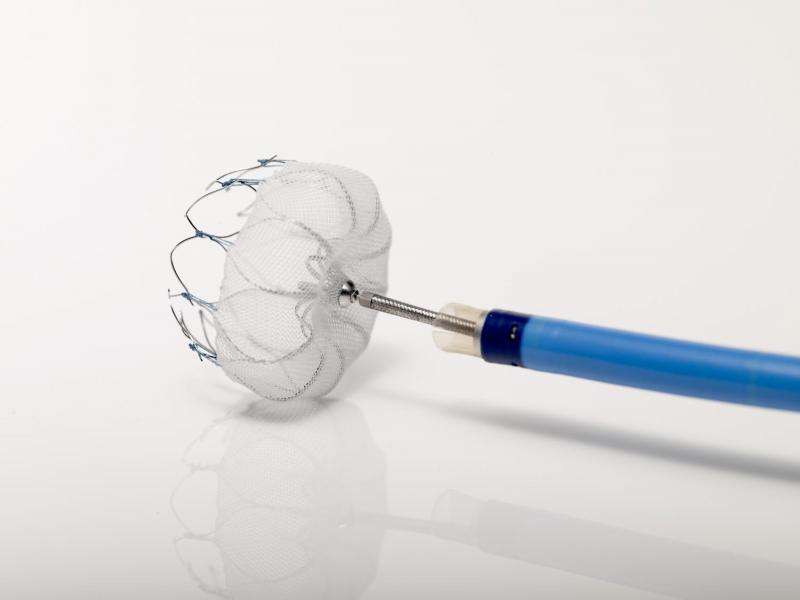WATCHMAN heart device gives patients alternative to blood thinners and reduces stroke risk

MedStar Heart & Vascular Institute now offers patients with irregular heart rhythm a minimally invasive option to reduce the risk of stroke, as well as enable stopping long-term use of blood thinning medication. Physicians at MedStar Heart at MedStar Washington Hospital Center were the first in the Washington metropolitan region to successfully implant the WATCHMAN Device on June 16 in two patients with atrial fibrillation (A-fib). Four more patients are scheduled for July 7.
Many patients with A-fib-an abnormal rhythm-are treated with blood thinners, which reduce the likelihood of experiencing potentially dangerous blood clots within the heart. But blood thinners can increase the risk of bleeding, and patients must be closely monitored.
"People with atrial fibrillation have a five-fold increased risk of stroke compared to people without atrial fibrillation, so it is essential that they take blood thinners to minimize that risk. But many have difficulty," said Lowell F. Satler, MD, director of the Cardiac Catheterization Laboratory at MedStar Washington Hospital Center. "The WATCHMAN Device is a potentially life-changing stroke risk treatment that could free certain patients from taking the blood-thinning medication."
In a procedure that lasts an hour under anesthesia, the WATCHMAN Device is inserted through a catheter in the groin area. It is then implanted in the heart to close off an area called the left atrial appendage (LAA), the most common site where harmful blood clots form in patients with A-fib. The device prevents these clots from entering the bloodstream, where they might otherwise travel to the brain and cause a stroke. By closing off the LAA, which is believed to be the source of the majority of stroke-causing blood clots, the risk of stroke can be reduced, and over time, patients may be able to stop taking blood thinners.
"We have extensive experience and expertise in treating atrial fibrillation along the complete spectrum of its presentations and severity. Providing our patients with yet another option to help manage their A-fib now further enhances our integrated and comprehensive approach to A-fib therapy at MedStar Heart & Vascular Institute," added Zayd Eldadah, MD, PhD, director of Cardiac Electrophysiology with MedStar Heart at MedStar Washington Hospital Center.
WATCHMAN implants are performed in the Hospital Center's Cardiac Electrophysiology Laboratory or Cardiac Catheterization Laboratory through a partnership among interventional cardiologists and electrophysiologists. Most patients typically stay overnight in the hospital following the procedure. Over time, heart tissue grows over the WATCHMAN implant, permanently sealing off the LAA. Most patients will be able to discontinue the use of blood thinners after 45 days.
MedStar Heart & Vascular Institute physicians have been implanting the WATCHMAN Device for the last eight years in clinical trials testing the device.
Atrial fibrillation is a common heart condition, currently affecting more than five million Americans. Researchers believe 20% of all strokes occur in patients with A-fib. As always, patients should discuss all options with their physicians to determine if the WATCHMAN Device is appropriate for their condition.















